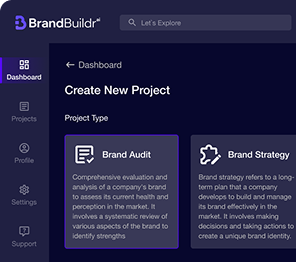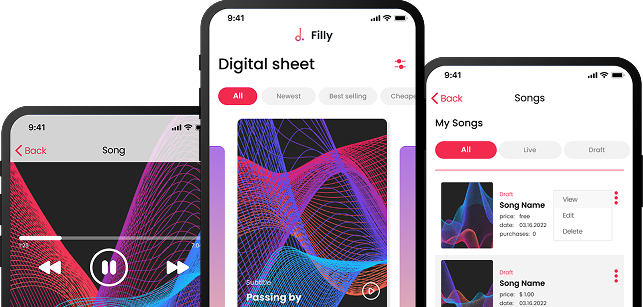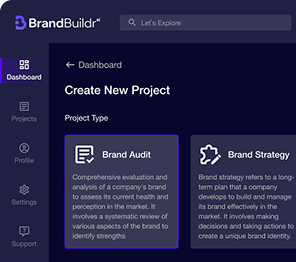Startups often struggle to build and scale their software due to limited resources, lack of specialized expertise, and the pressure to move quickly. Partnering with a custom software development company can provide access to experienced developers, proven processes, and scalable solutions, mitigating these risks.

Why Startups Need a Strong Tech Foundation?
A significant portion of failures can be attributed to inadequate or poorly executed software development for startups strategies. Building a successful product requires a strategic approach that balances speed, scalability, and user-centric design. Discover the top strategies that can help your startup build a thriving and sustainable software solution. According to Forbes, nearly 70% of startups fail.
According to Forbes, nearly 70% of startups fail.
A strategic partnership offers startups numerous advantages. First, it provides immediate access to a team of seasoned professionals who understand the intricacies of software development, eliminating the need for lengthy and costly hiring processes. Second, it brings proven methodologies and best practices to the table, ensuring that the software is built efficiently and effectively. Third, it offers scalability, allowing the startup to adjust its development capacity as needed without the overhead of managing a large in-house team. These partners offering dedicated product teams deliver features faster, accelerating the time to market.
For example, Codebridge specializes in UI/UX design, web and mobile applications, and cloud solutions. By partnering with Codebridge, startups can leverage this expertise to create visually appealing, user-friendly, and scalable software products. Codebridge helps startups avoid common pitfalls such as poor architecture, inadequate testing, and lack of user feedback, ultimately accelerating their time to market and increasing their chances of success.
Agile or Waterfall?
Selecting the right development methodology is crucial for startups. The two primary approaches are Agile and Waterfall, each with its own strengths and weaknesses. Understanding these methodologies is essential for making an informed decision.
Agile methodologies, such as Scrum and Kanban, are iterative and incremental. They emphasize flexibility, collaboration, and continuous improvement. In Agile, projects are broken down into small, manageable chunks called sprints, typically lasting one to four weeks. Each sprint involves planning, development, testing, and review. Daily stand-up meetings keep the team aligned, and sprint retrospectives provide opportunities to learn and adapt. Agile is particularly well-suited for startups operating in dynamic environments with rapidly changing requirements. Industry reports suggest that startups using Agile methodologies experience a 40% reduction in time-to-market compared to those using Waterfall.
In contrast, the Waterfall approach is a linear, sequential process. Each phase of the project (requirements gathering, design, implementation, testing, deployment, maintenance) must be completed before the next phase can begin. Waterfall is best suited for projects with well-defined requirements and minimal anticipated changes. However, its rigidity can be a disadvantage for startups that need to adapt quickly to market feedback.
Agile Metrics: Measuring What Matters
To ensure successful Agile implementation, it's essential to track key metrics. These metrics provide insights into team performance, project progress, and overall efficiency. Some of the most important Agile metrics include:
- Velocity: Measures the amount of work a team can complete in a sprint. Tracking velocity helps with sprint planning and forecasting.
- Sprint Burndown Rates: Visualizes the amount of work remaining in a sprint. This helps the team stay on track and identify potential roadblocks.
- Feature Completion Accuracy: Assesses the accuracy of initial estimates for feature development. This helps improve future sprint planning.
By monitoring these metrics, startups can identify areas for improvement and optimize their Agile processes.
Building a Minimum Viable Product That Resonates
The Minimum Viable Product (MVP) is a version of a product with just enough features to attract early-adopter customers and validate a product idea early in the development cycle. It's a critical concept for startups looking to minimize risk and maximize learning.
The process of strategic feature selection for an MVP involves identifying the core functionalities that address the most pressing needs of the target audience. It's crucial to avoid feature bloat and focus on delivering value with the fewest possible features. This allows startups to quickly test their assumptions, gather feedback, and iterate on their product. Studies show that startups employing MVP-driven development see user retention rates increase by as much as 65% due to early feedback integration.
Iterative MVP Development: Learning and Adapting
Iterative MVP development is based on the Build-Measure-Learn feedback loop. The process starts with building the MVP, followed by measuring its performance and gathering user feedback. The insights gained from this process are then used to learn and adapt the product.
This iterative approach allows startups to continuously refine their product based on real-world usage and feedback. It helps them avoid building features that users don't want or need and ensures that the product evolves in the right direction. By embracing iterative development, startups can increase their chances of building a successful product that resonates with their target audience.

Leveraging Existing Development Frameworks
In the fast-paced world of startups, time is of the essence. Leveraging existing development frameworks and tools can significantly accelerate development and reduce costs.
Frameworks like React and Django provide pre-built components and functionalities that can be used to build complex applications quickly. React is a popular JavaScript library for building user interfaces, while Django is a high-level Python web framework. Using these frameworks can save startups countless hours of development time and effort.
In addition to frameworks, SaaS platforms can be used for non-core functionalities such as email marketing, customer support, and payment processing. This allows startups to focus on their core competencies and avoid building features that are already available as a service. Reports indicate that using existing frameworks can reduce initial development time by 40-60%.
It's also important to consider the architecture of the application for future scaling. Monolithic architecture, where all components are tightly coupled, can be simpler to develop initially but can become difficult to scale later. Microservices architecture, where components are loosely coupled and can be deployed independently, offers greater scalability but requires more complex infrastructure.
Implementing Automated Testing Pipelines
Automated testing is essential for maintaining code quality and stability. Implementing automated testing pipelines can help startups maintain deployment velocity and reduce errors.

CI/CD (Continuous Integration/Continuous Deployment) pipelines automate the process of building, testing, and deploying code. This allows developers to quickly integrate changes, run automated tests, and deploy new versions of the software with minimal manual intervention. Automated testing frameworks, such as Selenium and JUnit, can be used to write and execute automated tests. Startups that implement automated testing pipelines experience a 30% reduction in post-launch critical bugs.

Test Coverage Optimization
Test coverage measures the percentage of code that is covered by automated tests. While it's important to have good test coverage, it's also important to optimize test coverage to avoid diminishing returns.
Focusing on testing the most critical and complex parts of the code can provide the greatest benefit. Prioritizing integration tests, which test the interactions between different components of the system, is also key. By finding the right balance, startups can ensure that their code is thoroughly tested without wasting resources on testing trivial or low-risk areas.
User-Centricity: Designing for Delight
User-centric design is the process of designing products and services with a focus on the needs, wants, and limitations of the end-users. It's a critical factor for startup success.
Behavioral-driven prototyping involves creating prototypes that simulate the user's interaction with the product. This allows designers to observe how users behave and identify potential usability issues early in the design process. Usability testing involves having real users test the product and provide feedback, helping identify usability issues that may not be apparent to the designers. Research suggests that startups conducting usability testing before MVP launch see user satisfaction scores increase by 50%.
Accessibility is another important consideration. Ensuring that the product is accessible to users with disabilities is not only the right thing to do but also can expand the potential market. WCAG (Web Content Accessibility Guidelines) provides a set of guidelines for making web content more accessible.
Maintaining Code Quality
Writing clean and maintainable code is essential for long-term scalability. Code that is easy to understand, modify, and test is less likely to cause problems in the future.
Modular architecture patterns involve breaking down the application into smaller, independent modules. This makes the code easier to understand and maintain, and also allows developers to work on different parts of the application simultaneously. Managing technical debt is also crucial; technical debt refers to the implied cost of rework caused by choosing an easy solution now instead of using a better approach that would take longer. Companies that enforce SOLID principles in their codebases demonstrate 60% faster feature implementation speeds during growth phases. SOLID is an acronym for five design principles that promote code maintainability and extensibility.
The Power of Market Research
Continuous market validation is essential for startups. It involves gathering data and feedback from potential customers to ensure that the product meets their needs and that there is a market for it.
Data-driven customer development involves using data to identify and understand the target audience. This can include analyzing website traffic, social media engagement, and customer surveys. Competitive landscape monitoring involves tracking the activities of competitors to identify opportunities and threats. By staying informed about the competitive landscape, startups can make better decisions about their product strategy. For additional insights, explore how custom software can further drive innovation and growth for startups in this article. Customer development interviews can also lead to better product-market fit.
Scalability from the Start
Planning for scalability from the beginning is crucial to avoid costly refactoring later. Scalability refers to the ability of the system to handle increasing amounts of traffic and data.

Cloud-native architecture foundations involve building the application using cloud-based services and technologies. This allows the application to scale easily and efficiently. Performance optimization strategies involve identifying and addressing performance bottlenecks. This can include optimizing database queries, caching frequently accessed data, and using content delivery networks (CDNs). Implementing infrastructure-as-code can lead to reduced environment configuration time by up to 75%.
Hiring the Right Development Team
Building a skilled and reliable development team is essential for startup success. The development team is responsible for building and maintaining the software product, so it's important to hire the right people.
Studies show that dedicated development teams with experienced members are 30% more efficient than individual freelancers or generalist firms. When hiring developers, look for individuals with the technical skills and experience needed to build the product. It's also important to consider cultural fit; developers should be able to work well together and with the rest of the team. Hiring experienced professionals can bring valuable expertise and insights to the team. For further guidance, check out this article on hiring a development team for your startup. Again, partners offering dedicated product teams deliver features faster
The Future of Software Development for Startups: Adapt or Perish
In conclusion, strategic software development for startups is critical for success. By embracing strategies such as strategic partnerships, Agile methodologies, MVP-driven development, and automated testing, startups can increase their chances of building a thriving and sustainable software solution. Startups must embrace adaptability and innovation to succeed in today's competitive market. Ready to build a scalable and successful product? Contact Codebridge to discover how our custom software development solutions can help your startup thrive.
FAQ
What are the top software development strategies that startups should follow?
Startups should prioritize MVP development, lean product iterations, user-centered design, scalable architecture, and automated testing. These strategies help teams launch faster, validate ideas quickly, and reduce costly mistakes during early growth stages.
Why is building an MVP crucial for startup software success?
An MVP allows startups to test core features with real users without investing in full product development. It minimizes risk, provides early market validation, and ensures resources are spent on features customers actually want—accelerating product-market fit.
How can startups choose the right tech stack for their software project?
Startups should consider scalability, development speed, community support, and cost when choosing a tech stack. Modern frameworks like React, Flutter, Node.js, and Django help teams build fast, reliable solutions with strong long-term maintainability.
Why is agile development one of the best strategies for startups?
Agile development breaks work into small, manageable sprints, allowing teams to adapt quickly to feedback and changing requirements. This iterative approach increases transparency, reduces risk, and ensures the product evolves efficiently based on user needs.
How can startups balance speed and quality in software development?
Startups can balance both by using automated testing, continuous integration (CI/CD), clear code standards, and a well-defined development roadmap. Focusing on essential features first and avoiding unnecessary complexity keeps development fast without sacrificing reliability.
What role does user feedback play in shaping startup software products?
User feedback helps identify missing features, usability issues, and opportunities for improvement. By collecting feedback early and often, startups can refine their product direction, improve customer satisfaction, and increase retention—leading to stronger long-term success.
Heading 1
Heading 2
Heading 3
Heading 4
Heading 5
Heading 6
Lorem ipsum dolor sit amet, consectetur adipiscing elit, sed do eiusmod tempor incididunt ut labore et dolore magna aliqua. Ut enim ad minim veniam, quis nostrud exercitation ullamco laboris nisi ut aliquip ex ea commodo consequat. Duis aute irure dolor in reprehenderit in voluptate velit esse cillum dolore eu fugiat nulla pariatur.
Block quote
Ordered list
- Item 1
- Item 2
- Item 3
Unordered list
- Item A
- Item B
- Item C
Bold text
Emphasis
Superscript
Subscript





















.avif)



.avif)

.avif)


